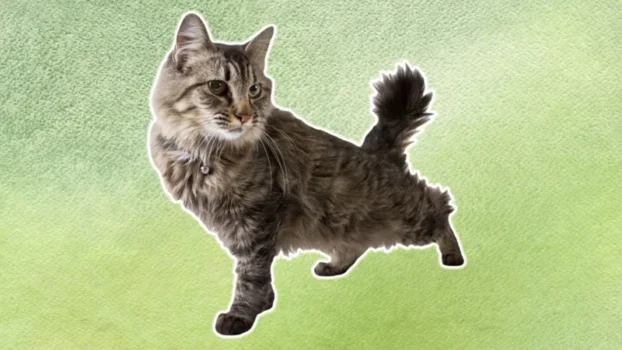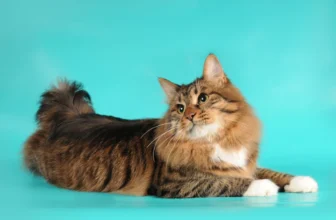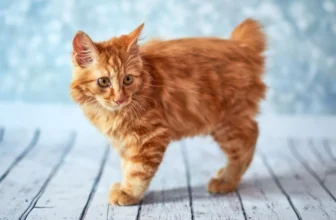It’s a curious tale, one that starts in the native lands of America and weaves its way into the modern world. From the small beginnings of a group of cats with natural stubbed tails, the American Bobtail breed has emerged as a beloved companion to many. The history of this breed is filled with legends, controversies, and triumphs. In this article, we will trace the fascinating history of the American Bobtail breed, from its humble beginnings to the height of its popularity today. Join us as we explore the story of a breed that embodies the heart and soul of the American spirit.
The Origins of American Bobtail Breed
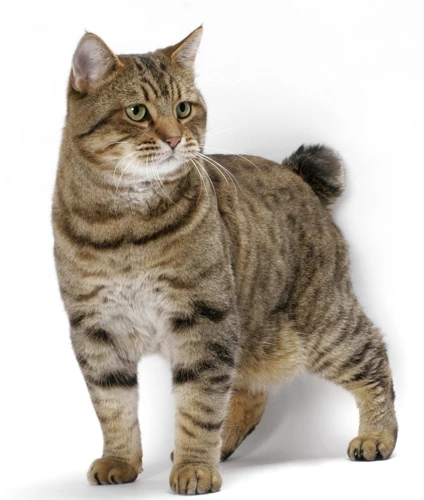
The intriguing history of the American Bobtail breed dates back to ancient times, with tales of wild felines roaming the lands of North America. While the exact details of their origins remain a mystery, there are several fascinating legends surrounding their arrival. Some say that these cats were brought over by ancient migrants who crossed the Bering Land Bridge, while others believe that they were native to the American continent. Despite the uncertainty surrounding their origins, one thing is clear – the American Bobtail heritage is deeply rooted in North America’s history and culture. Learn more about the evolution of this fascinating breed in our article about the origin story of the American Bobtail.
Legend
According to the legend, the American Bobtail breed is believed to first appear several centuries ago when a domestic tabby cat in Southeast Asia and an American Lynx were crossbreed by nature. A chance encounter of this type led to the creation of a bobtail kitten with a wild appearance and an independent nature. This kitten became the ancestor of the American Bobtail today.
Although the story may seem far-fetched, it’s one that’s passed down through several generations of the breed’s enthusiasts. It has helped to fuel the fascination and popularity of the breed. However, there are no scientific studies or genetic evidence that supports the story of the natural crossbreed that led to the development of the breed.
The known history of the American Bobtail breed only goes back to the 1960s when John and Brenda Sanders, a couple from Iowa, discovered a short-tailed cat and adopted it. The couple acquired more cats that’d shared the same short-tailed characteristic and started to breed them, intrigued by the uniqueness.
Nevertheless, the legend remains an essential part of the breed’s history and its charm. It helps to evoke the image of a wild, independent, and rugged feline.
Today, the breed is recognized and appreciated worldwide, in part because of the legend’s romantic tale. To learn more about the evolution of the American Bobtail breed or its popularity, check out Evolution of the American Bobtail Breed or American Bobtail Breed Popularity in the US.
Native Breeds
The American Bobtail has a rich history that dates back to the Native American cultures that existed before European colonization. The breed is believed to have come about as a result of a natural genetic mutation in native short-tailed cats. These native breeds, including the Lynx and Bobcat, are known for their distinctive short tails, muscular bodies, and wild appearances.
One legend states that the American Bobtail’s ancestors were brought over by immigrants who were fascinated by their unique physical features. According to this legend, the American Bobtail was created by crossbreeding a short-tailed Siamese cat with a Lynx, creating a breed with a wild look and the friendly disposition of a domestic cat. However, this story lacks historical evidence and is likely more of a romanticized myth.
Another theory suggests that American Bobtails were created through natural selection, adapting to the rough terrain, harsh weather conditions, and wildlife of North America. This adapted them perfectly to their native environment, making them excellent hunters and survivors. This theory suggests that the American Bobtail is truly a native American breed.
No matter how the breed came to be, it’s clear that these native short-tailed cats played a significant role in the development of the American Bobtail breed. Their striking appearance, independent nature, and hunting abilities have been passed down to the modern-day breed.
Today, the American Bobtail is celebrated for its unique appearance, friendly personality, and natural hunting skills. Its connection to native American cultures makes it a beloved breed among those who appreciate this heritage. To learn more about the American Bobtail breed’s connection to native American culture, please click on the following link: /native-american-culture-american-bobtail-breed/.
The First Breeding Program
The development of the American Bobtail breed began with the first deliberate breeding program in the 1960s. This involved crossbreeding various domestic cat breeds with wild bobcats to create cats that exhibited the bobtail trait, but were also compatible as family pets. Some of the breeds used in these early breeding programs included the Siamese, the Himalayan, and the Burmese.
The First Steps: The breeders aimed to create a new breed that would have a distinctive appearance and loving personality. Initially, the breeders focused on bobtail cats with a wild appearance and playful nature. They first considered crossbreeding already existing bobtail cats in the American West as quickly as they could found ones. The resulting combinations of cats with naturally short tails yielded some kittens with shorter tails than the others. In addition to bobcats, breeds such as the Manx, Siberian, and Japanese Bobtail were also crossed with domestic cats to create a breed with the desired features.
Nurturing a New Breed: The breeders faced many challenges during the developing process, including high infant mortality rates and incompatibility between parent breeds. However, perseverance and careful observation helped establish the American Bobtail breed. The kittens of wild bobcats are born in the spring, and the breeders quickly capitalized on this to breed their domestic cats to wild bobcats.
The Result: After years of experimentation, the American Bobtail was finally bred, which had a muscular body, a sturdy frame, and a naturally short tail. Their coat was a blend of different colors, including brown, black, and silver. Because of its unique appearance and friendly temperament, the breed quickly gained popularity among cat lovers and became recognized by many cat associations, including The International Cat Association (TICA) and The American Cat Fanciers Association (ACFA).
Breeders’ Passion: The breeders from different states of America devoted their time, efforts, and love to create a new breed from this region that would be distinctive and dazzling. They believed that the American Bobtail was a unique and lovable breed that deserved recognition. Today, the American Bobtail breed is recognized around the world and is known for its intelligence, playfulness, and affectionate personality.
A Recognition Process
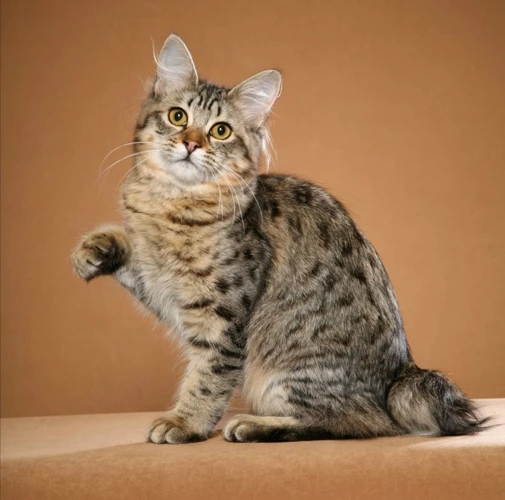
It’s not every day that a new breed of cat is recognized, and the process of gaining recognition is one filled with complexities and challenges. For the American Bobtail, the journey towards official recognition was a long and winding one. It took many years of dedicated breeding, advocacy, and education to convince the powers that be that the American Bobtail was a breed worthy of recognition. In this section, we’ll dive deep into the recognition process and explore the hurdles that had to be overcome for the American Bobtail to achieve the status that it enjoys today.
Foundations of the Breed Standards
The foundations of the American Bobtail breed standards, which outline breed characteristics and physical appearance, began in the late 1960s. Breeders began crossing domestic shorthairs with naturally occurring short-tailed cats in an effort to develop a breed with desirable traits.
Physical Characteristics: The American Bobtail is a medium to large-sized cat, with a muscular build and a short, bobbed tail. The tail should be clearly visible above the back, and can be straight, slightly curved, or have a bump. They have an athletic appearance, with a broad head and full cheeks. Their eyes are usually almond-shaped and can be any color, with gold or green being the most common. The fur is luxurious, with a shaggy, woolly undercoat and a rough outer coat that can come in any color or pattern.
Temperament: The American Bobtail is known for its friendly, outgoing, and playful nature. They are highly intelligent and enjoy solving puzzles and playing games with their owners. They are also fiercely loyal and make great companions for families with children or other pets. They have a gentle and affectionate disposition, often showing their love by “bumping” their owners with their distinctive tails.
Recognition: In 1989, the International Cat Association (TICA) recognized the American Bobtail breed and established official breed standards. The breed was also recognized by the Cat Fanciers Association (CFA) in 2002. These standards outline the specific traits and characteristics that make the American Bobtail unique, and serve as a guide for responsible breeding.
Breed Standards: Below are the American Bobtail breed standards established by TICA:
| Breed Characteristics | Standard |
|---|---|
| Head Shape | Broad with full cheeks and a convex curve between the brow and nose |
| Ears | Medium to large size, slightly rounded at the tips and set wide apart |
| Eyes | Almond-shaped and expressive, any color accepted |
| Body | Medium to large size, muscular and well-rounded with a broad chest and broad shoulders. |
| Tail | Short to mid-length, straight, slightly curved or have a bump |
| Coat | Luxurious, with a shaggy, woolly undercoat and a rough outer coat that can come in any color or pattern |
| Personality | Friendly, outgoing, playful, highly intelligent, and fiercely loyal to their owners |
These standards ensure that the American Bobtail breed maintains its unique characteristics and physical appearance, while also promoting responsible breeding practices.
Creating an Official Breed
After the establishment of the American Bobtail breeding program, breeders started to work on developing the breed’s characteristics and achieving formal recognition. The process of creating an official breed was a long and challenging one that required dedication and effort.
The First Standard
The first step in creating an official breed was to establish a standard that would define the American Bobtail’s characteristics. Breeders had to take into consideration the breed’s unique physical features, temperament, and behavior. In 1989, the breed standard was created by a group of dedicated breeders who wanted to secure the future of the American Bobtail. The standard described the ideal physical and behavioral characteristics that the breed should possess.
The TICA Recognition
After the establishment of the breed standard, the American Bobtail breeders submitted an application for recognition to The International Cat Association (TICA). The application was accepted and in 2000, the American Bobtail was granted registration status. The breed was then promoted to the Advanced New Breed (ANB) category in 2002.
The Championship Status
After fulfilling certain requirements, such as achieving specific numbers of registered cats and a stable breeding program, the American Bobtail was granted Championship status in 2006. This meant that the breed was now recognized as an official breed that could participate in TICA competitions and shows.
The CFA Recognition
The American Bobtail was also recognized by the Cat Fanciers’ Association (CFA) in 2002. The CFA granted the breed Provisional status, which is the first step towards achieving Championship status. In 2013, the American Bobtail was granted Championship status by the CFA, making it an official breed in this association as well.
The process of creating an official breed was a challenging one, but the dedication and hard work of the breeders paid off. Today, the American Bobtail is recognized as an official breed by multiple cat associations and continues to gain popularity among cat lovers worldwide.
Popularity and Expansion of the Breed
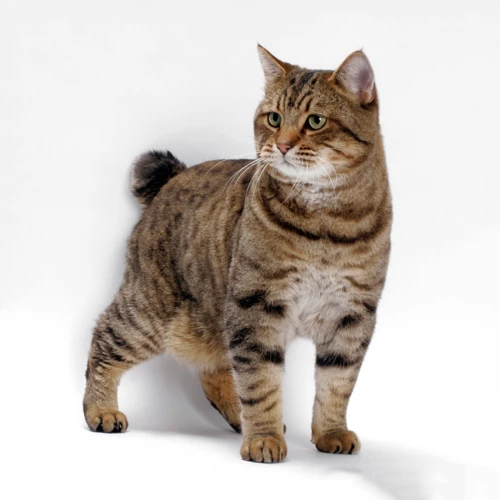
As the American Bobtail breed continued to gain recognition, it also began to grow in popularity. This led to an increase in demand for these unique cats, which sparked a wave of expansion both within the United States and around the world. But what factors were driving this surge in interest? And who were the influential Bobtails that helped put this breed on the map? Let’s delve deeper to uncover the fascinating story of the American Bobtail’s rise to prominence.
The Increase in Demand
As the American Bobtail breed gained recognition and popularity, the demand for these unique felines increased dramatically. Their striking appearance and affectionate personalities won over many cat enthusiasts, resulting in a surge of interest among potential owners.
Factors Contributing to the Increased Demand:
- Their Wild Appearance: American Bobtails’ wild appearance, thanks to their distinctive bobtail and large, muscular build, sets them apart from other domesticated breeds.
- Adaptable Nature: What makes them even more unique is their adaptable nature. They can thrive in country or city environments, making them a great fit for a variety of households.
- Family-Friendly: The temperament of the American Bobtail breed is also a major draw for potential owners. These cats are known for being gentle and affectionate with their families, making them an excellent choice for households with children and other pets.
- Celebrity Endorsements: Their rising fame got a boost from celebrity endorsements, such as that of Taylor Swift, who owns and adores two American Bobtail cats.
As a result of these factors, the demand for American Bobtail kittens has seen a marked increase in recent years, with breeders unable to keep up with the demand alone.
Ensuring High Standards:
To ensure quality and integrity, various breeders worked diligently to improve breed standards, and the breeding protocols considerably evolved throughout time. Breeders aimed to uphold the set standards, improving the breed over time, and preserving its unique traits.
Even with the increasing popularity of American Bobtails, breeders remain committed to maintaining the breed’s identity and unique traits for future generations of cat enthusiasts to enjoy.
Influential Bobtails
The American Bobtail breed has had its fair share of influential cats throughout its history. Here are some notable examples:
- Yodi: One of the foundation cats of the breed, Yodi had a distinctive bobbed tail and a wild appearance. He was instrumental in establishing the breed standards that are still followed today.
- Sierra: Another foundation cat, Sierra was known for her beautiful coat and affectionate personality. She passed on her good looks and loving nature to many of her offspring, ensuring their success in the show ring.
- Jonnie: As one of the first American Bobtails to win a major cat show, Jonnie helped to put the breed on the map. He was praised for his muscular build and distinctive coat pattern, which set him apart from his competition.
- Tumbleweed: A winner of multiple awards and an ambassador for the breed, Tumbleweed was known for his unique tail that looked like it had been dipped in white paint. He was also praised for his friendly and sociable nature, which made him a hit with cat lovers around the world.
- Makita: A popular show cat and ambassador for the breed, Makita had a beautiful coat and a playful personality that won over judges and fans alike. She was also a successful breeder, passing on her good looks and friendly demeanor to many of her offspring.
These cats, along with many others, have helped to shape the American Bobtail breed into what it is today. They have left a lasting legacy that continues to inspire cat lovers and breeders around the world.
International Expansion
The popularity of the American Bobtail breed began to grow rapidly, not only within the United States but also internationally. In the 1990s, American Bobtails were introduced to Japan, and their unique appearance and loving personality quickly captured the hearts of many cat lovers.
Here are some key points of the international expansion of American Bobtail breed:
- As the breed gained more recognition and accolades, breeders began exporting American Bobtails to other countries.
- Today, this distinct breed is found in many countries around the world, including Canada, the United Kingdom, Australia, and Europe.
- The American Bobtail breed has also been recognized by various international cat associations, such as The International Cat Association (TICA), the World Cat Federation (WCF), and the Cat Fanciers’ Association (CFA).
- These associations have further expanded the reach of the American Bobtail breed, allowing it to participate in international cat shows, and gain even greater recognition and popularity.
- The international expansion has also led to the breeding of American Bobtails with different coat patterns and colors, giving rise to unique variations such as the spotted American Bobtail and the black American Bobtail.
- The unique appearance and friendly disposition of the American Bobtail breed continue to endear them to cat lovers around the world, making them a highly sought-after breed in the international cat community.
The international expansion of the American Bobtail breed has led to increased recognition and appreciation of this unique and fascinating breed, and has contributed to its continued popularity and success today. The breed has truly become a global phenomenon, captivating cat lovers everywhere with their distinctive look and loving personality.
The American Bobtail Breed Today
As we move into the present day, it’s fascinating to take a closer look at how the American Bobtail breed has evolved and changed over time. Today, this unique breed has gained significant popularity, both domestically and internationally. cat lovers have become increasingly fascinated by the breed’s distinctive appearance and personality traits. Let’s explore the current state of the American Bobtail breed, from its revised breeding standards to its involvement in feline competitions, and the importance of maintaining a healthy lifestyle for our furry friends.
Revisions of the Breeding Standards
The American Bobtail breed has gone through various changes and modifications over the years, including revisions to its breeding standards. These standards dictate the physical characteristics, temperament, and breeding requirements for the breed.
One significant change in the breeding standards occurred in 2002 when the International Cat Association (TICA) changed the tail length requirement from a specific length to simply “short” or “long.” This alteration was made to allow for more diversity within the breed, as cats with shorter or longer tails were now able to be included in breeding programs.
Additionally, TICA made revisions to the ideal body shape for American Bobtails, emphasizing a strong, muscular build and a broad head with wide-set ears. The breed’s eyes are typically almond-shaped and can be any color, and its coat can come in a wide range of colors and patterns.
To ensure that American Bobtails continue to meet these standards, breeders must follow strict guidelines when selecting cats for breeding. This includes health testing and screening for genetic diseases to prevent the development of health issues in future litters.
It’s important to note that while these breeding standards serve as a guideline for breeders, not all American Bobtails will fit the exact criteria. Each cat is unique and may exhibit variations in physical characteristics and temperament.
In fact, the unique characteristics of the American Bobtail breed are part of what makes them such fascinating pets. Their playful and affectionate personalities, coupled with their distinct physical appearance, make them a popular choice among cat owners today.
Participation in Competitions
The American Bobtail breed has become increasingly popular in cat competitions around the world. They excel in many different categories, including agility, obedience, and showmanship. American Bobtails are admired for their unique appearance, intelligence, and playful disposition.
Agility Competitions: One type of cat competition that American Bobtails have gained recognition in is agility. In agility competitions, cats must navigate through a series of obstacles, such as tunnels, jumps, and weave poles, in the fastest time possible. American Bobtails are known for their agility and speed, making them fierce contenders in these competitions.
Obedience Competitions: American Bobtails are also known for their intelligence and trainability, which makes them a great fit for obedience competitions. These competitions test a cat’s ability to follow commands and perform specific tasks. The breed’s high intelligence and natural athleticism make them excellent candidates for obedience training.
Showmanship Competitions: Showmanship competitions showcase a cat’s appearance and overall presentation. American Bobtails have unique physical characteristics, with their short tails, muscular bodies, and distinct markings. These attributes make them a standout in showmanship competitions, where judges evaluate their physical attributes, grooming, and overall presentation.
American Bobtails have also been recognized in various cat associations, including The International Cat Association (TICA) and the Cat Fanciers’ Association (CFA). These associations hold annual competitions for various breeds, including the American Bobtail.
The American Bobtail breed has proven to be a multifaceted and competitive breed, excelling in various categories of cat competitions. Their unique appearance, intelligence, and playful temperament make them a favorite among cat enthusiasts and a contender in the competition world.
Health and Lifestyle
Taking care of the health and lifestyle of your American Bobtail is essential for a happy and healthy pet. This breed is known for its robust health, but as with all animals, preventive measures are necessary to keep them in top shape.
One of the main health concerns for American Bobtails is obesity. With their love for food, it’s important to monitor their diet and exercise regularly. A healthy diet that is tailored to their needs can help prevent obesity, which can lead to other health issues such as diabetes, joint pain, and heart disease.
Another important aspect of a healthy lifestyle for your American Bobtail is regular exercise. They are an active breed, and daily playtime and exercise will keep them mentally and physically stimulated. Interactive toys that encourage physical activity are a great way to keep your cat engaged and healthy.
As with all cats, it’s important to stay on top of vaccinations and regular checkups with a veterinarian. American Bobtails are generally healthy, but regular checkups can catch any health issues early on and ensure they get proper treatment.
Here’s a table summarizing some key points to consider for maintaining the health and lifestyle of your American Bobtail:
| Aspect of Health and Lifestyle | Key Points to Consider |
|---|---|
| Diet | Feed a diet tailored to their needs to prevent obesity and associated health issues |
| Exercise | Provide daily playtime and interactive toys to keep them engaged and physically stimulated |
| Regular Checkups | Stay on top of vaccinations and regular checkups with a veterinarian to catch any health issues early on |
By following these health and lifestyle guidelines, you can ensure your American Bobtail stays healthy and happy for years to come.
Conclusion
After exploring the fascinating history of the American Bobtail breed, it’s clear that these cats have come a long way since their origins as native breeds. Through careful breeding programs and a dedicated recognition process, the American Bobtail has emerged as a beloved breed both in the United States and around the world.
Despite their popularity, American Bobtails have managed to maintain many of their unique traits and characteristics. Their distinctive appearance, affectionate nature, and playful personalities have made them a favorite among cat lovers worldwide.
It’s important to note that, like any breed, American Bobtails require proper care and attention to thrive. As with any pet, it’s essential to provide them with a balanced and nutritious diet, regular exercise, and regular visits to the vet to ensure their good health.
In conclusion, the American Bobtail breed is a testament to the power of careful breeding and the potential for cats to capture the hearts of people everywhere. Whether you’re a long-time fan of the breed or encountering them for the first time, the American Bobtail is sure to leave a lasting impression with its charm and distinctive personality.
Frequently Asked Questions
What is the temperament of American Bobtail cats?
American Bobtail cats are known for being affectionate, social, and intelligent. They enjoy spending time with their human family and have a playful nature.
Do American Bobtail cats require a lot of grooming?
No, American Bobtail cats have a short to medium-length coat that is easy to maintain. Regular brushing can help keep their coat shiny and healthy.
What health issues are common in American Bobtail cats?
While American Bobtail cats are generally healthy, they may be prone to hip dysplasia and urinary tract issues. It’s important to schedule regular vet check-ups to ensure their health and well-being.
Do American Bobtail cats get along well with other pets?
Yes, American Bobtail cats are social beings and can get along well with other pets, including dogs and other cats. Proper introduction and early socialization are key to a harmonious household.
Are American Bobtail cats good with children?
Yes, American Bobtail cats are known for being great with children. Their playful nature and social personality make them excellent companions for kids.
How long do American Bobtail cats typically live?
American Bobtail cats have a lifespan of around 13-15 years, but with proper care and attention, they can live even longer.
Are American Bobtail cats easy to train?
Yes, American Bobtail cats are intelligent and can be trained with positive reinforcement techniques. Teaching them tricks and obedience commands can be a fun bonding activity.
What is the history of the American Bobtail breed?
The American Bobtail breed originated in the 1960s when a short-tailed cat was discovered in Arizona. The breed has since been developed through selective breeding and has gained popularity worldwide.
How can I adopt an American Bobtail cat?
There are a number of reputable breeders of American Bobtail cats, or you can check with local animal shelters or rescue organizations. Always make sure to do proper research and choose a responsible breeder or rescue group.
What should I consider before bringing an American Bobtail cat into my home?
You should consider whether you have the time, resources, and energy to care for a pet, including providing them with proper nutrition, exercise, and veterinary care. It’s also important to ensure that your home is a safe and suitable environment for a cat.

